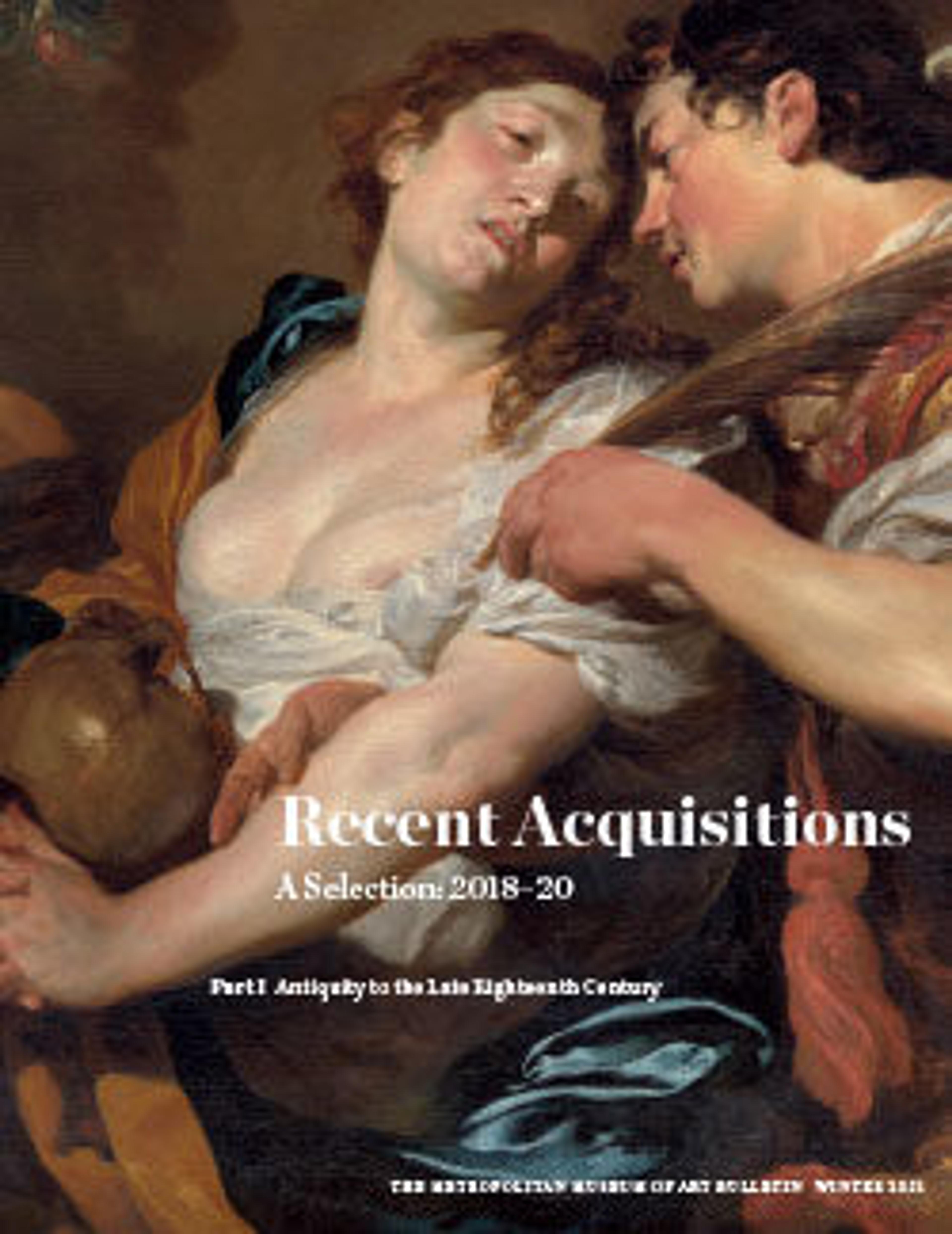Lion with the names of Pharaoh Necho II
This fine lion with cartouches of the pharaoh Necho II on its shoulders lay atop another figure (now missing), perhaps a human captive, more likely a prey animal. The sculpture may have been pegged to the lid of a box.
Stylistic elements like the curled mane suggest the lion was created in the Near East, and even more specifically point to the Syro-Hittite area. In fact, the piece speaks with remarkable immediacy of a moment in Egyptian history. Between 609 and 605 Necho's Egyptian troops fought at Harran and Carchemish in the Syro-Hittite region alongside the Assyrians against the conquering Neo-Babylonians under Nebuchadrezzar II.
Stylistic elements like the curled mane suggest the lion was created in the Near East, and even more specifically point to the Syro-Hittite area. In fact, the piece speaks with remarkable immediacy of a moment in Egyptian history. Between 609 and 605 Necho's Egyptian troops fought at Harran and Carchemish in the Syro-Hittite region alongside the Assyrians against the conquering Neo-Babylonians under Nebuchadrezzar II.
Artwork Details
- Title: Lion with the names of Pharaoh Necho II
- Period: Late Period
- Dynasty: Dynasty 26
- Reign: reign of Necho II
- Date: 610–595 BC
- Geography: From Egypt
- Medium: Steatite, glaze
- Dimensions: L. 5.6 × W. 2.8 × H. 3.5 cm (2 3/16 × 1 1/8 × 1 3/8 in.)
- Credit Line: Purchase, Patricia A. Cotti and Lila Acheson Wallace Gifts, 2019
- Object Number: 2019.259
- Curatorial Department: Egyptian Art
More Artwork
Research Resources
The Met provides unparalleled resources for research and welcomes an international community of students and scholars. The Met's Open Access API is where creators and researchers can connect to the The Met collection. Open Access data and public domain images are available for unrestricted commercial and noncommercial use without permission or fee.
To request images under copyright and other restrictions, please use this Image Request form.
Feedback
We continue to research and examine historical and cultural context for objects in The Met collection. If you have comments or questions about this object record, please contact us using the form below. The Museum looks forward to receiving your comments.
